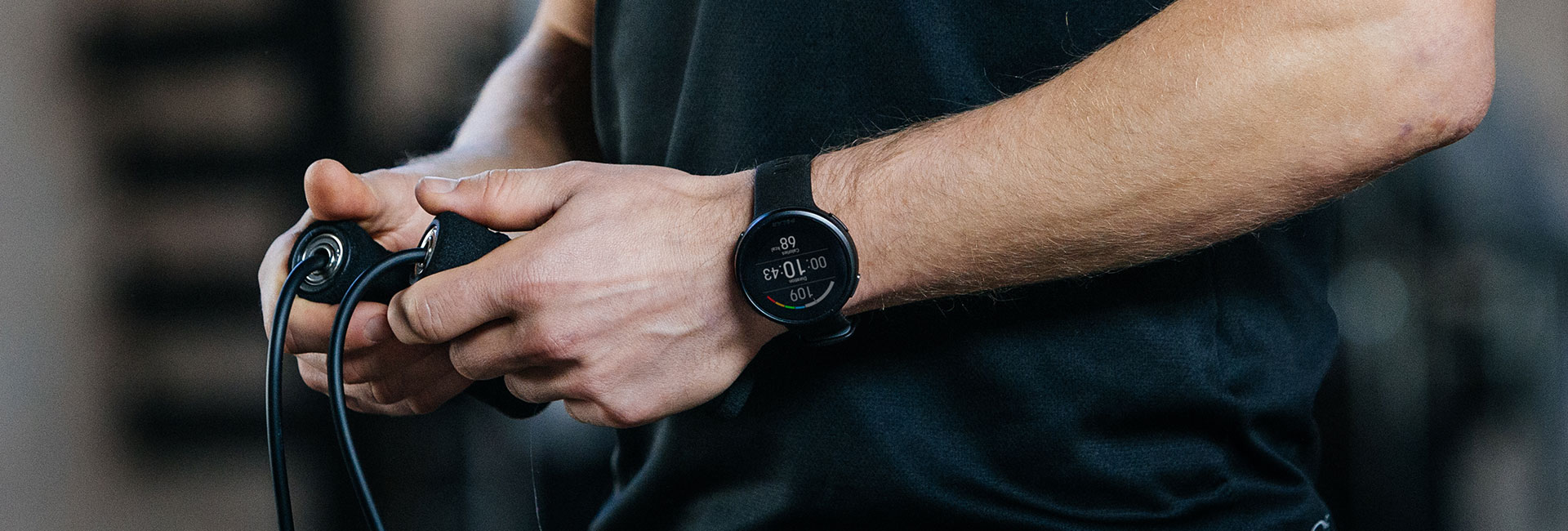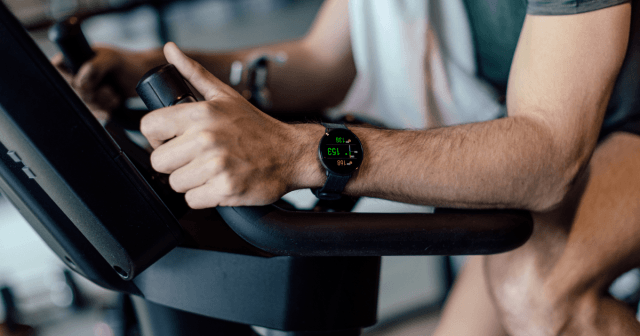Every time you workout, you measure your rate of perceived exertion – perhaps without even realising it. When we exercise, we naturally think about what a particular session, and more specifically our body, feels like as we decide to push ourselves a little harder or maintain our current pace.
So, what is the benefit of formally measuring it with the Borg Scale? And how does it relate to your heart rate? Here’s a guide to understanding your rate of perceived exertion and why it’s good to tune into your body.
Rate of Perceived Exertion definition
The rate of perceived exertion (RPE) is a way of measuring the intensity of physical activity. It is a subjective rating, which means you judge it for and about yourself.
Measuring your RPE is very intuitive. We all do it naturally by observing how we feel during any kind of physical activity. Has your heart rate increased? Are you breathing deeper? Do your muscles feel fatigued?
RPE is a formal scale that helps you identify exactly what level of exertion you feel you are exercising at by applying a number to it and then assessing if you are doing enough, too much or are getting it just right.
Why use Rate of Perceived Exertion?
Using a heart rate monitor will always provide you with the most detailed data about how your training is going in real-time. But it’s always good to be tuned in with how your workout makes you feel.
When we are conscious of our bodies while we’re active, we ensure that we are present with our breath, our heart, and any pains, strains or odd feelings, thus being more aware of any risk of injury. So, paying attention to your RPE is a very complimentary measurement to use alongside your heart rate training.
What is the Borg Scale?
Swedish psychologist Dr Gunnar Borg created the Borg Scale of Perceived Exertion in the 1960s as a method for measuring the intensity of an experience.
There are two Borg scales: the Borg RPE Scale for perceived exertion and exercise intensity and the Borg CR Scale for any form of perception and feeling, such as medical symptoms.
Borg RPE scale 6-20
The original Borg scale contains 15 points, running from 6 to 20, and was developed to measure physical strain. On this scale, a rating of 6 represents no exertion (for example, resting), and a rating of 20 represents maximum exertion.
| Rating | Descriptor |
| 6 | No Exertion at all |
| 7 | Extremely Light |
| 8 | |
| 9 | Very light |
| 10 | |
| 11 | Light |
| 12 | |
| 13 | Somewhat Hard |
| 14 | |
| 15 | Hard (Heavy) |
| 16 | |
| 17 | Very Hard |
| 18 | |
| 19 | Extremely Hard |
| 20 | Maximal Exertion |
Source
Borg CR scale 1-10
The Category Ratio (CR) scale contains 10 points, running from 1 to 10, and was originally developed to measure shortness of breath (known medically as dyspnea). However, it is now used for a broad range of situations.
On this scale, a rating of 0 represents no exertion (for example, resting), and a rating of 20 represents maximum exertion.
| Rating | Descriptor |
| 0 | Rest |
| 1 | Very, very easy |
| 2 | Easy |
| 3 | Moderate |
| 4 | Somewhat hard |
| 5 | Hard |
| 6 | – |
| 7 | Very hard |
| 8 | – |
| 9 | – |
| 10 | Maximal |
Source
RPE and heart rate
The original Borg scale for RPE was developed to draw a correlation between heart rate while exercising and how a person felt about their workout.
This Borg scale runs from 6-20 because the score you select should correspond to your heart rate when multiplied by 10. For example, if you felt your RPE was 15, then it is likely that your heart rate would be around 150 BPM.
The Borg scale is a very approximate calculation, though, as various factors such as age, medication and fitness level can cause affect your heart rate. The best way to identify your heart rate is always by measuring it (with a heart rate sensor on your chest or a fitness watch that can monitor your wrist-based heart rate).
If you liked this post, don’t forget to share so that others can find it, too.
Or give it a thumbs up!
I like this article
Please note that the information provided in the Polar Blog articles cannot replace individual advice from health professionals. Please consult your physician before starting a new fitness program.





